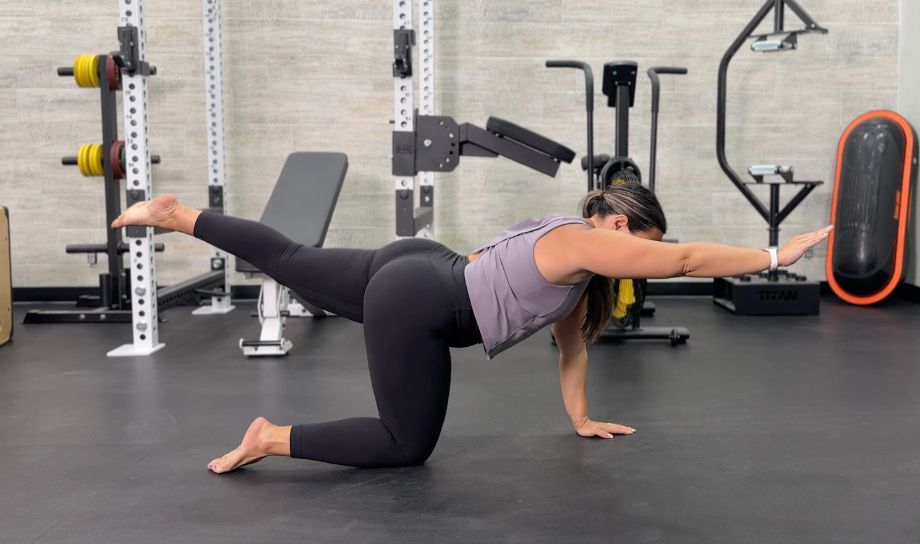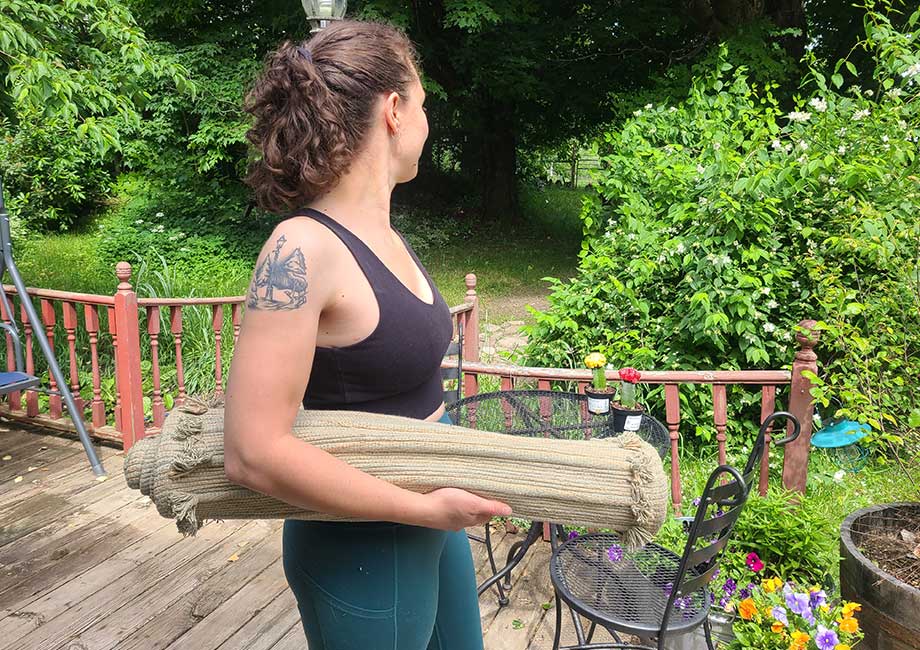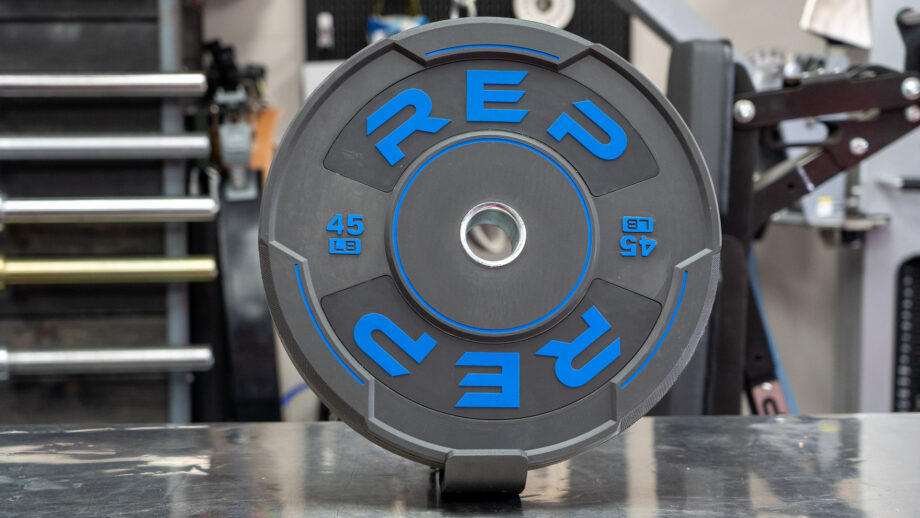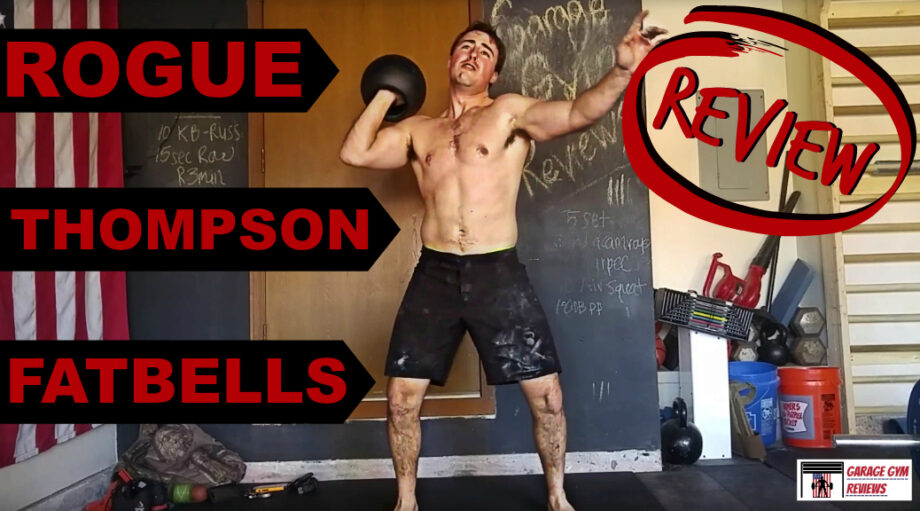No matter your fitness level, you already know what’s just around the corner: beach season, baby! It’s time to fill your beginner core workouts with the best ab exercises to create a shredded set of six-pack abs.
I’m a Certified High-Performance Coach (CHPC) with the accolades and experience to dish out the best information when designing your beginner ab workouts. I’ll cover the 10 best beginner core exercises I rely on to build a foundation for core strength and stability when training new athletes and clients. Then, I’ll share a sneak peek of a killer beginner core workout. Last, I’ll wrap things up with a quick dose of core anatomy, helping you to understand how the core muscles function so you can target them effectively.
RELATED: Dumbbell Core Workout
10 Best Beginner Core Exercises
These 10 beginner core exercises expand beyond traditional crunches, ensuring functional strength and size development while introducing exercise variation, targeting major core muscles like the transverse abdominis, obliques, and pelvic floor.
Pelvic Tilt
Why do it: Pelvic control helps stimulate your lower abs and alleviates low back pain. A March 2023 systematic review in Neurological Sciences1 revealed that pelvic floor muscle-strengthening exercises significantly reduce low back pain intensity.
How to do it:
- Lie on your back with your knees bent and feet flat on the floor.
- Using your abdominal muscles, press your lower back into the floor and tilt your pelvis upward.
- Hold the position briefly, then release and return to the starting position.
- Repeat for the desired number of repetitions, focusing on controlled movements and maintaining core muscle engagement throughout.
RELATED: How To Do the Pelvic Tilt Exercise
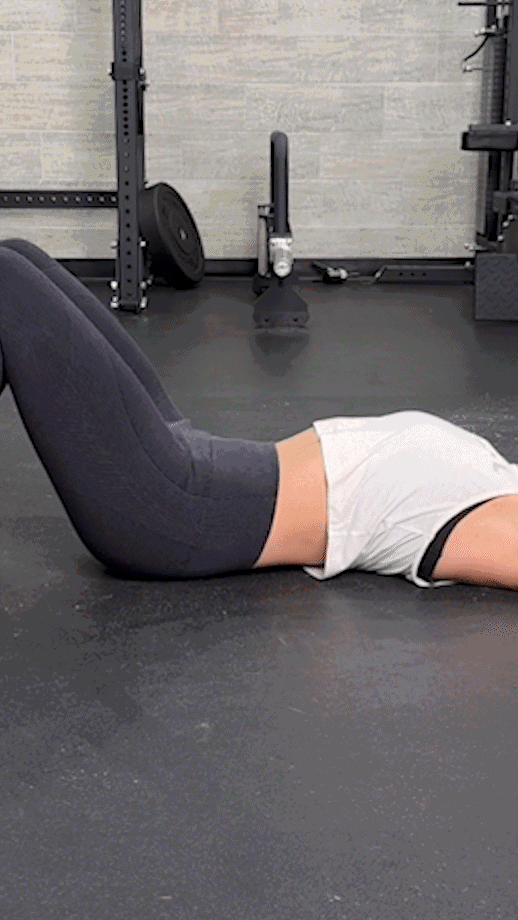
Dead Bug
Why do it: Dead bugs are simple to learn yet very effective for activating your rectus and transverse abdominis. There are plenty of variations to explore within your core workouts: dumbbell dead bugs, dead bug pullovers, same-side (ipsilateral) dead bugs, and my favorite, the “3-month dead bug.”
How to do it:
- Begin in a supine position on the floor, with your knees bent at a 90-degree angle and arms fully extended above your chest.
- Engage your core muscles to press your lower back firmly against the mat.
- Exhale as you simultaneously extend your right arm above your head and your left leg forward.
- Inhale as you return to the starting position, then repeat the movement with your left arm and right leg.
- Continue alternating sides until completing the set.
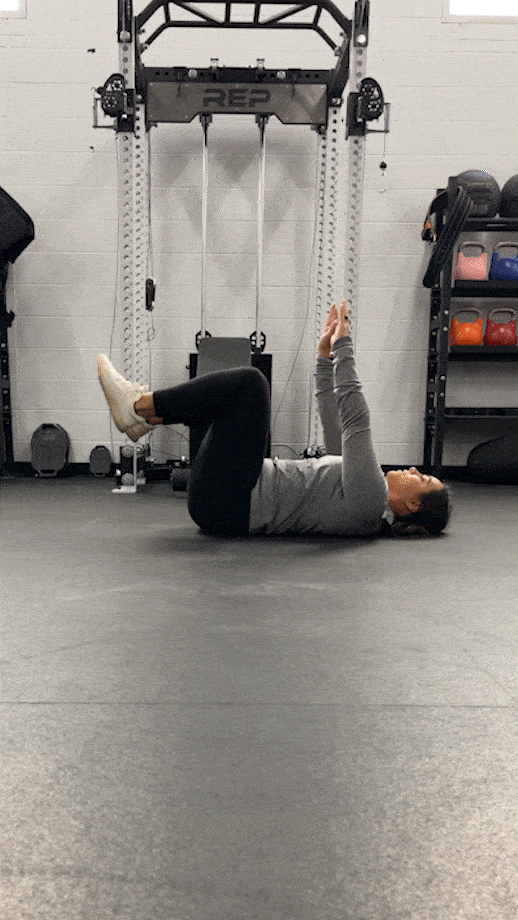
Plank Hold
Why do it: I program plank variations (traditional and side) to teach proper bracing and engagement of your core (shoulders/upper back, abs, and glutes). Planks directly correlate to the necessary action for stabilizing your torso in compound exercises.
How to do it:
- Enter the push-up position or place your elbows directly below your shoulders, shoulder-width apart.
- Step your feet back, establishing a straight line from head to heel.
- Squeeze your core muscles and glutes to stabilize yourself.
- Hold this position, keeping your body straight and your back flat without sagging at the hips or arching your back.
- Keep your neck in a neutral position by looking down at the floor, and focus on maintaining steady breathing.
- Brace for the desired amount of time.
RELATED: 13 Plank Exercises and Variations
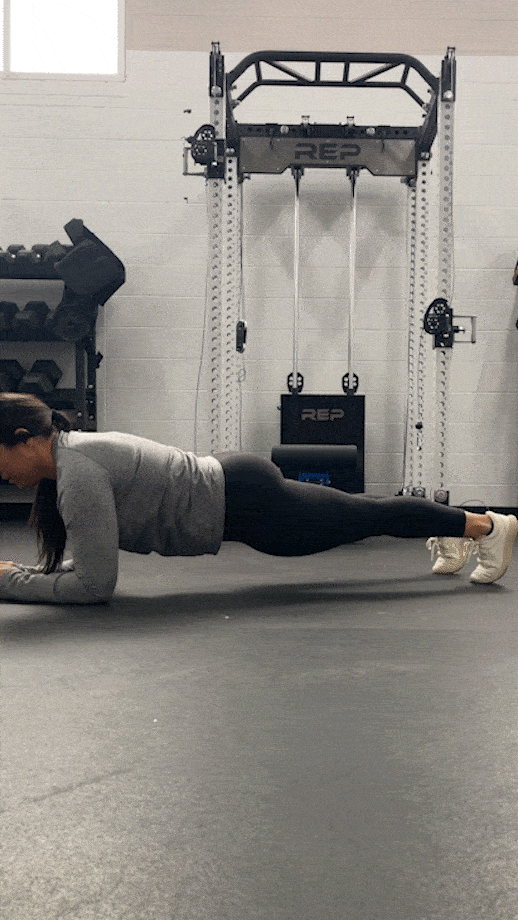
Lying Leg Raise
Why do it: Lying leg raises, or leg lifts, stimulate your lower abs by lifting the legs towards the upper body, offering superior activation compared to standard core exercises.
How to do it:
- Lie on your back with your legs extended and feet together.
- Place your hands underneath your hips for support, lifting your lower back slightly off the floor.
- Raise your legs until they are vertical, perpendicular to the floor.
- Lower your legs slowly, avoiding contact with the floor, and smoothly transition into the next repetition.
- Repeat for desired sets and reps.
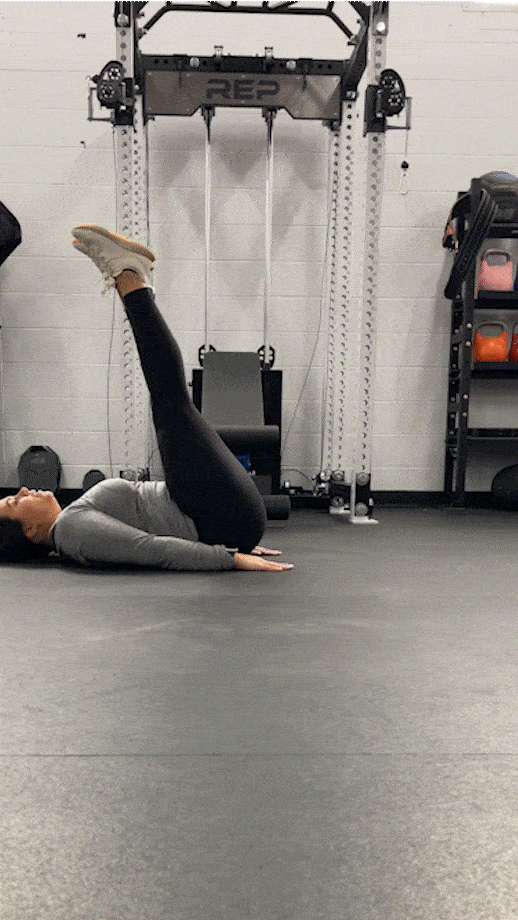
Half Crunch
Why do it: The half-crunch exercise singles out your upper abs without recruiting your hip flexors. This isolation effect allows you to develop the top half of the six-pack abs (aka your rectus abdominis).
How to do it:
- Lie on your back with your knees bent and your feet flat on the floor.
- Place your hands behind your head or cross them over your chest.
- Engage your core muscles and lift your shoulders off the floor, bringing your shoulder blades a few inches off the ground.
- Hold the crunch for a moment, focusing on contracting your abdominal muscles.
- Slowly lower your upper body back down to the starting position.
- Repeat for desired sets and reps.
RELATED: How To Do the Crunches Exercise
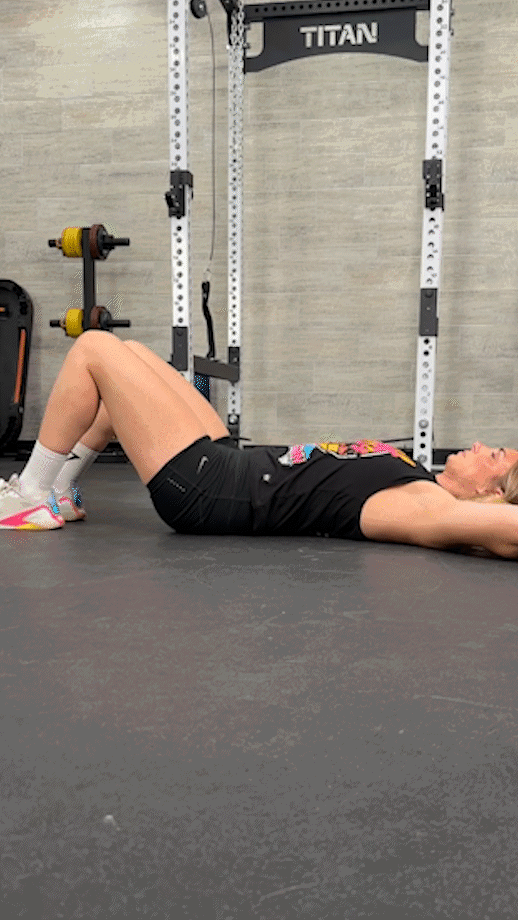
Russian Twist
Why do it: Russian twists provide a full core effect, engaging your obliques, rectus and transverse abdominis, pyramidalis, and hip flexor muscles in a rotational pattern, an often overlooked movement for your core training.
How to do it:
- Sit on the floor with your knees bent and feet flat, leaning back slightly until you feel your core engage.
- Position your hands in front of your body, clasping them together.
- Rotate your torso to one side, aiming to touch both hands or the weight to the floor.
- Return to the center and repeat the twist on the opposite side.
- Continue alternating sides
- Repeat for desired sets and reps.
Expert tip: You can perform this exercise with your bodyweight only or progress it with weights such as a pair of the best dumbbells, the best kettlebells, or a medicine ball.
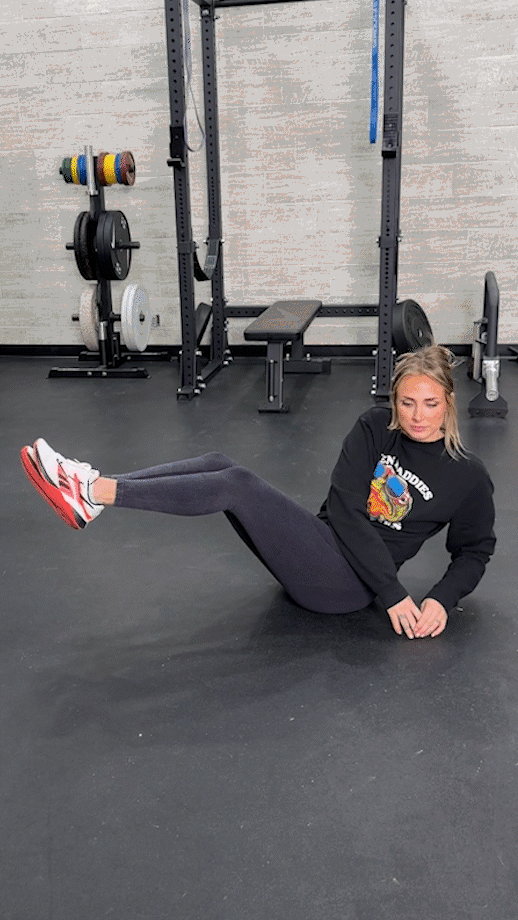
Bicycle Crunch
Why do it: A dynamic spin on traditional crunches, bicycle crunches train your core rotationally, targeting the rectus and transverse abdominis, obliques, and hip flexors.
How to do it:
- Lie on your back with your knees bent and your hands behind your head, elbows pointing outward.
- Lift your shoulders off the ground by squeezing your core muscles.
- Straighten your right leg while simultaneously bringing your left knee toward your chest, twisting your torso to bring your right elbow toward your left knee.
- Repeat the movement on the other side.
- Continue alternating sides in a pedaling motion, keeping your core engaged and your movements controlled.
- Repeat for desired sets and reps.
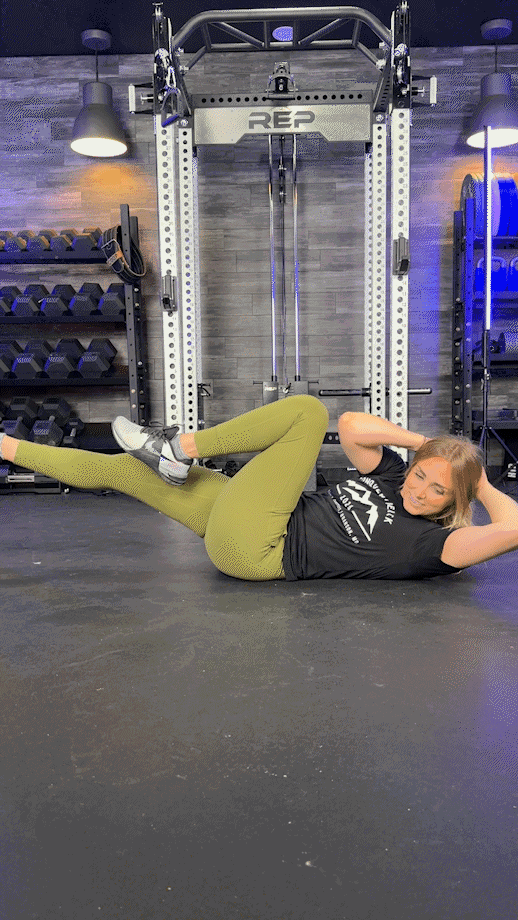
Bird Dog
Why do it: Bird dogs offer a straightforward, beginner-friendly, low-intensity method to enhance core strength and stability, alleviate back pain, and effectively activate the glutes and core muscles.
How to do it:
- Start on all fours, with your hands under your shoulders and knees under your hips.
- Reach your right arm directly in front of you and lift and straighten your left leg simultaneously, keeping both limbs parallel to the floor.
- Hold briefly, then return to the starting position.
- Alternate sides, lifting your left arm and right leg.
- Repeat for desired sets and reps.
Expert tip: If the bird dog exercise is new, begin with static holds. Once comfortable, progress to repetitions with shorter holds.
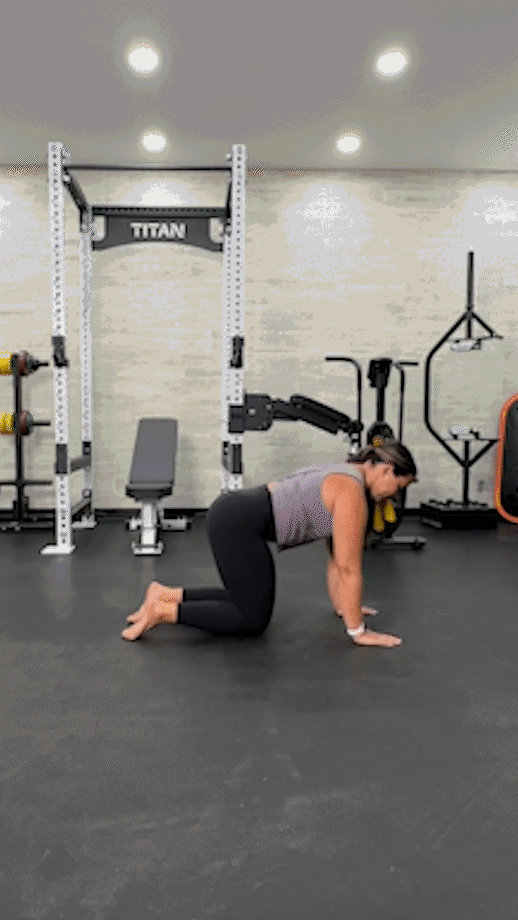
Reverse Crunch
Why do it: Reverse crunches harness the potent effects of eccentric training and target lower abs, compared to traditional crunches, which notoriously target the upper abs.
How to do it:
- Lie on your back with your arms by your sides.
- Bend your knees to form a 90-degree angle.
- Lift your hips and lower back off the ground, bringing your knees toward your chest.
- Pause, then slowly reverse the movement by gently lowering your back and hips to the floor.
- Repeat for desired sets and reps.
Expert tip: Utilize a long exhale as you lower your hips towards the floor and squeeze your abs.
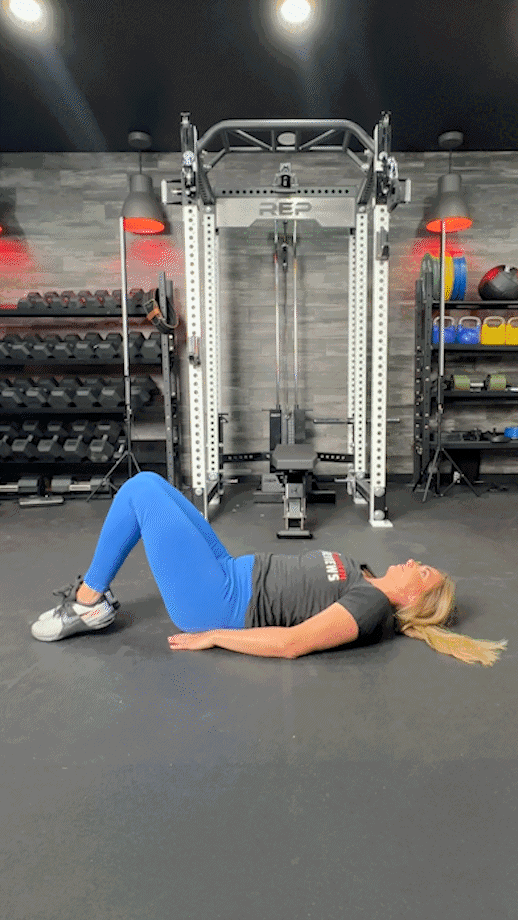
Wood Chop
Why do it: Wood chops, regardless of the variation—dumbbell, kettlebell, or cable—provide an effective functional exercise for your core, shoulders, and hips. They’ll target all of your abdominal muscles and improve rotational strength, power, and muscular endurance.
How to do it:
- Stand with your feet shoulder-width apart, holding a weight or cable attachment at your high, right side.
- Squeeze your abs and rotate your torso diagonally down and across.
- Lower the weight past your left shoulder.
- Slowly reverse the movement and return the weight to the starting position.
- Repeat for desired sets and reps, then switch sides.
Expert tip: Allow your eyes to track the movement of the weight or cable during each chop. This simple adjustment enhances rotational engagement in your core muscles and thoracic spine.
RELATED: Functional Core Exercises
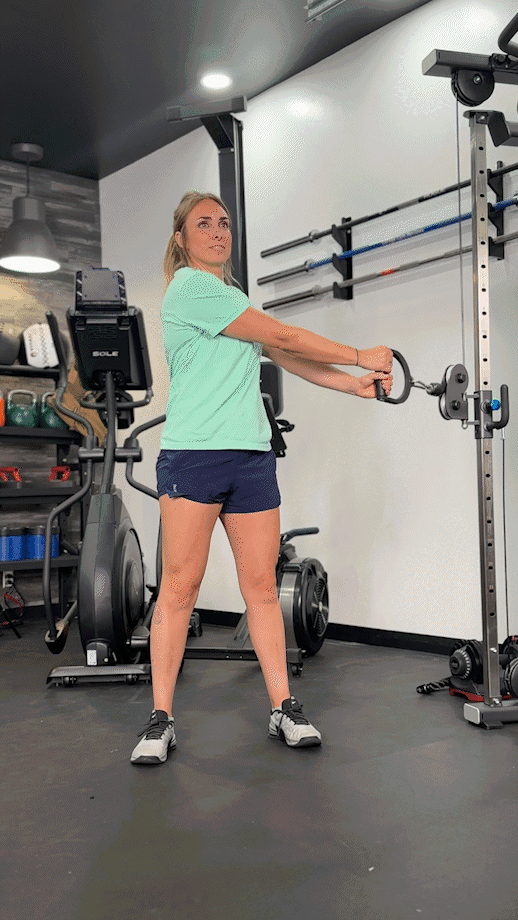
Sample Beginner Core Workout
This sample beginner core workout kicks things off with sets of static exercises, focusing on strong isometric contractions to flip the on switch for your abs. Next, the workout jumps into four dynamic exercises to improve functional strength and muscle size.
Plug this workout in at the end of your strength, full-body, cardio, or home workouts, or perform for an active recovery day session. Use weights at your discretion if desired!
Static Core
| Exercise | Sets | Reps |
| Plank Hold | 2-3 | 20-30 sec* |
| Dead Bug | 2-3 | 5-10, each side |
*Perform front and side plank variations before moving to the next exercise
Dynamic Core
| Exercise | Sets | Reps |
| Reverse Crunch | 3 | 5-8* |
| Lying Leg Raise | 3 | 10-15 |
| Bicycle Crunch | 3 | 10-12, each side |
| Wood Chop | 3 | 10-15, each side |
*Tempo: 3 sec lowering per rep
P.S. If you’re in a time crunch, try this trainer-approved 10-minute ab workout!
Anatomy of the Core
Dust off the ol’ Anatomy 101 textbook from high school as I take a (not so) deep dive into the anatomy of your core. I’ll touch on the important information here: location and function to help you develop your abdominal muscles.
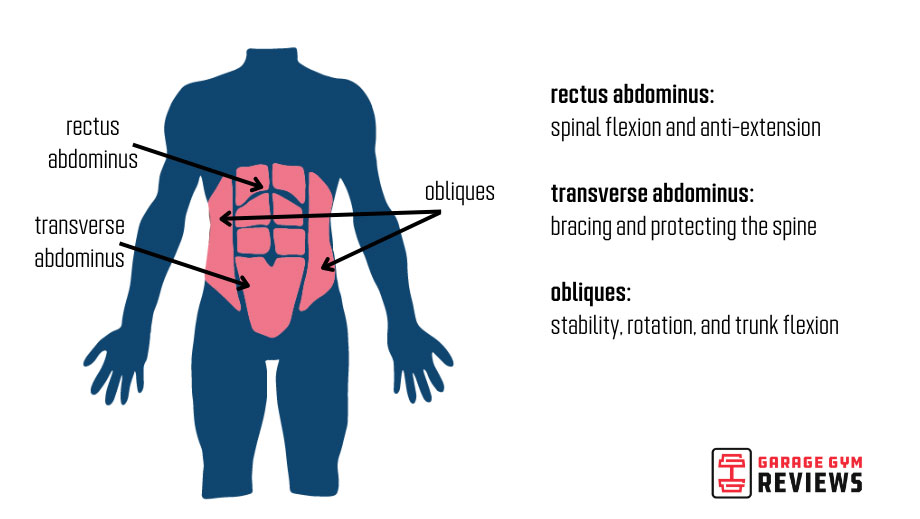
Rectus Abdominis
- Location: The rectus abdominis2 sits in the front of the abdomen and is commonly known as the “six-pack” muscles.
- Function: The primary role is to flex the spine during crunches and provide stabilization during various movements.
Transverse Abdominis
- Location: The transverse abdominis3 is the deepest layer of the abdominal muscles that wrap around the abdomen horizontally.
- Function: Acts as a corset, providing core stability and supporting the internal organs. It also assists in forced expiration (or exhaling) and helps maintain intra-abdominal pressure.
Internal and External Obliques
- Location: Located on the sides of the abdomen, with internal obliques4 positioned deeper and running at an angle opposite the external obliques5.
- Function: Facilitates rotation and lateral flexion of the trunk and provides stability during movements involving twisting or bending.
RELATED: Oblique Workouts
Erector Spinae
- Location: The erector spinae6 is a group of muscles that run along the spine, extending from the base of the skull to the sacrum.
- Function: Assists in extending the spine (bending backward) and maintaining an upright posture. They play a crucial role in stabilizing the spine during movements like lifting and bending.
RELATED: Hyperextension Exercise
Multifidus
- Location: The multifidus7 are deep muscles running along the length of the spine.
- Function: Provides stability to individual vertebrae and contributes to spinal extension, rotation, and lateral flexion. These muscles are particularly important for maintaining spinal alignment and stability during dynamic movements.
Pyramidalis
- Location: The pyramidalis8 is a small triangular muscle in the lower abdomen, between the rectus abdominis and the pubic symphysis.
- Function: Assists in tensing the linea alba, a fibrous band that runs down the midline of the abdomen. While it’s not as prominent or well-known as other core muscles, it’s activated during lower ab workouts. It contributes to core stability and support, especially during intra-abdominal pressure activities, such as lifting heavy weights or physical exertion.
Pelvic Floor Muscles
- Location: The pelvic floor muscles9 are located at the base of the pelvis.
- Function: Supports the pelvic cavity organs and plays a crucial role in urinary and fecal continence. These muscles also contribute to core stability by stabilizing the pelvis and connecting with other core muscles.
Beginner Core Workout: Final Thoughts
There’s so much more to developing the core muscles than having a sweet set of six-pack abs In summary:
- Beginner core workouts should focus on mastering the basics.
- Training your abs through varying techniques (static and dynamic) and movements (holds, rotation, anti-rotation) can help improve your functional fitness.
- A strong core will help bolster your strength training and prevent injury.
- Understanding a base level of core anatomy and function can help develop a targeted approach when programming your workouts.
Beginner Core Workout: FAQs
How do beginners strengthen their core?
As a certified strength and conditioning specialist (CSCS), I want to preach that every time you step into the gym or work out, especially for beginners, is an opportunity to strengthen your core.
Begin by incorporating core-stimulating exercises into your warm-up routine to prime these muscles for action. As you transition into strength movements such as squats, deadlifts, presses, rows, and lunges, consciously activate your core to enhance strength and stability.
Finally, dedicate a portion of your post-workout routine to targeted core exercises like dead bugs, planks, and crunch variations to reinforce core strength effectively.
What is the most effective ab workout for
The most effective ab workout for beginners includes exercises that teach you how to brace and engage your core actively, such as planks, bird dogs, and dead bugs, followed by hypertrophy-focused movements like Russian twists, lying leg raises, and bicycle crunches to chisel your midsection for washboard abs. Here’s a quick workout!
Perform 3 rounds of this core circuit:
– Plank Hold: 20 to 30-second holds
– Dead Bug: 8 reps per side
– Lying Leg Raise: 10 to 15 reps
– Bicycle Crunch: 10 reps per side
Rest 1 min. between rounds.
RELATED: 30-Day Ab Challenge
Should beginners train core?
Absolutely! Harnessing the ability to engage your core can boost compound exercises like squats, deadlifts, presses, and rows, just to name a few. A strong core provides foundational stability for strength movements and can be a gateway to crushing that next PR attempt!
Teach yourself to brace using plank holds, dead bugs, and bird dogs. Hypertrophy-based movements like variations of crunches are the “bodybuilding-esque” dose for your midsection—like bicep curls for your arms; crunches serve the same purpose for your midsection.
Do planks give you abs?
Planks train your core in the functional fashion of bracing. This leads to the development of your abs and strengthens your core by reaping the benefits of isometric contractions.
In an April 2019 study in the Scandinavian Journal of Medicine & Science in Sports10, researchers found that isometric training showed substantial improvements in muscular hypertrophy, and maximal force production was reported regardless of training intensity.
My advice: planks are great, especially when programming different variations, but make sure you train the core dynamically with exercises like wood chops, plank pull-throughs, Pallof presses, and medicine ball throws.
References
- Kazeminia M, Rajati F, Rajati M. The effect of pelvic floor muscle-strengthening exercises on low back pain: a systematic review and meta-analysis on randomized clinical trials. Neurol Sci. 2023;44(3):859-872. doi:10.1007/s10072-022-06430-z
- Kenhub. Rectus Abdominis Muscle. Accessed March 22, 2024. Available from: https://www.kenhub.com/en/library/anatomy/rectus-abdominis-muscle
- Kenhub. Transversus Abdominis Muscle. Accessed March 22, 2024. Available from: https://www.kenhub.com/en/library/anatomy/transversus-abdominis-muscle
- Kenhub. Internal Abdominal Oblique Muscle. Accessed March 22, 2024. Available from: https://www.kenhub.com/en/library/anatomy/internal-abdominal-oblique-muscle
- Kenhub. External Abdominal Oblique Muscle. Accessed March 22, 2024. Available from: https://www.kenhub.com/en/library/anatomy/external-abdominal-oblique-muscle
- Kenhub. Erector Spinae. Accessed March 22, 2024. Available from: https://www.kenhub.com/en/library/anatomy/erector-spinae-muscles
- Kenhub. Multifidus. Accessed March 22, 2024. Available from: https://www.kenhub.com/en/library/anatomy/multifidus-muscle
- Kenhub. Pyramidalis Muscle. Accessed March 22, 2024. Available from: https://www.kenhub.com/en/library/anatomy/pyramidalis-muscle
- Kenhub. Muscles of the Pelvic Floor. Accessed March 2, 2024: Accessed from: https://www.kenhub.com/en/library/anatomy/muscles-of-the-pelvic-floor
- Oranchuk DJ, Storey AG, Nelson AR, Cronin JB. Isometric training and long-term adaptations: Effects of muscle length, intensity, and intent: A systematic review. Scand J Med Sci Sports. 2019;29(4):484-503. doi:10.1111/sms.13375


